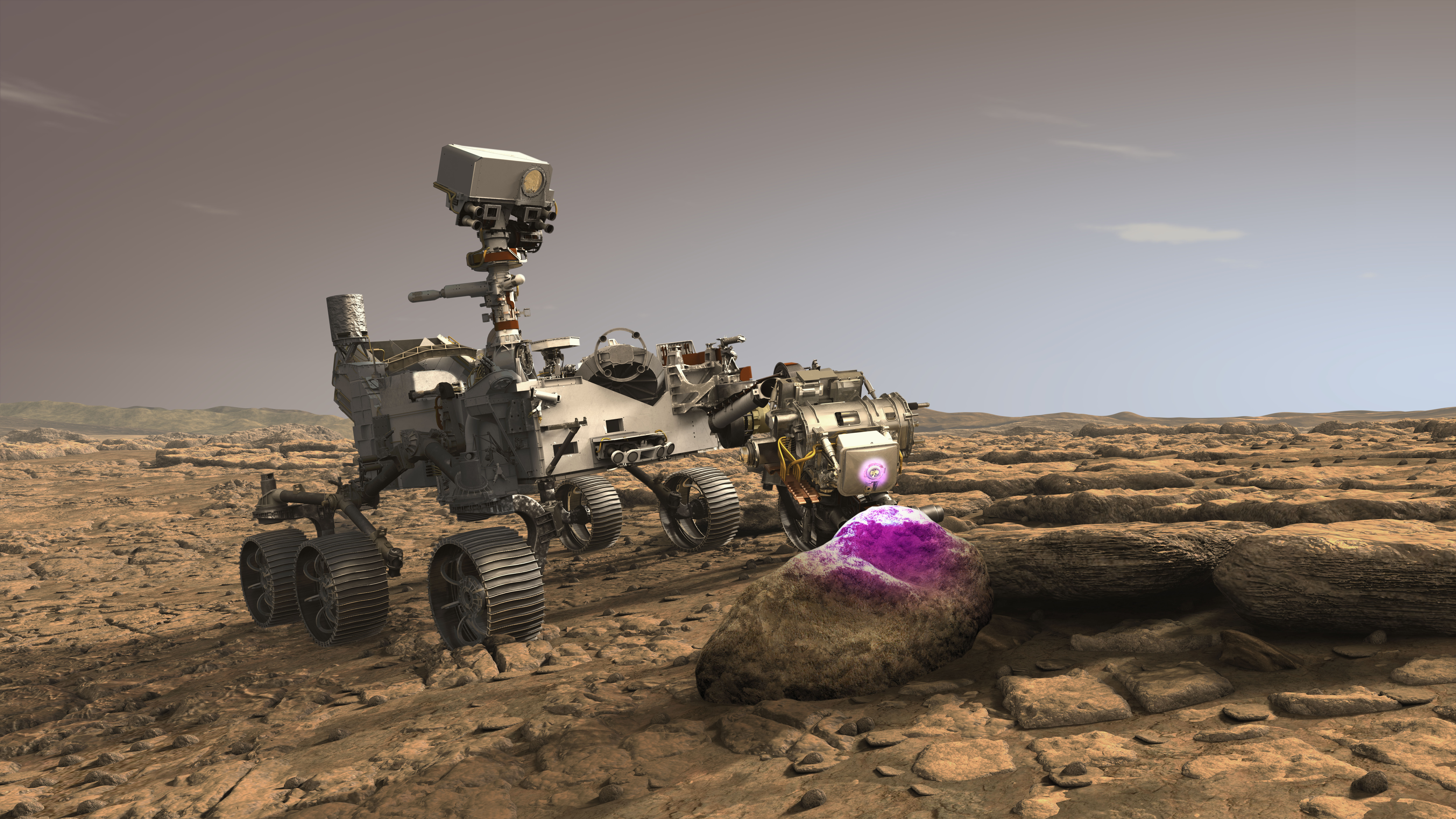Nick Tosca, Professor of Mineralogy and Petrology, is a member of the core science team for the Mars Perseverance 2020 mission. In this blog post Erin finds out how Nick has adapted to life as a researcher with NASA and gets the inside scoop on the first tantalising results.
How have found being part of the Mars 2020 science team?
It’s been fascinating from a scientific perspective, to be challenged with unravelling the history of some of the oldest sedimentary rocks in the solar system. I have two roles within the team: first as a Science Team member, where I work with others on interpreting the data, and secondly in a more practical operations role – helping plan scientific experiments and analyses with the Perseverance Rover. That second role consumes about 3 days a month, and it does also mean some very late nights online with the team over in the US!
Tell me about the sampling you and the team have been doing
We’ve been driving the Rover between two of what are interpreted to be relatively older rock sequences quite carefully, collecting data to understand the stories they tell, and making a path towards to remnants of the delta inside Lake Jezero.
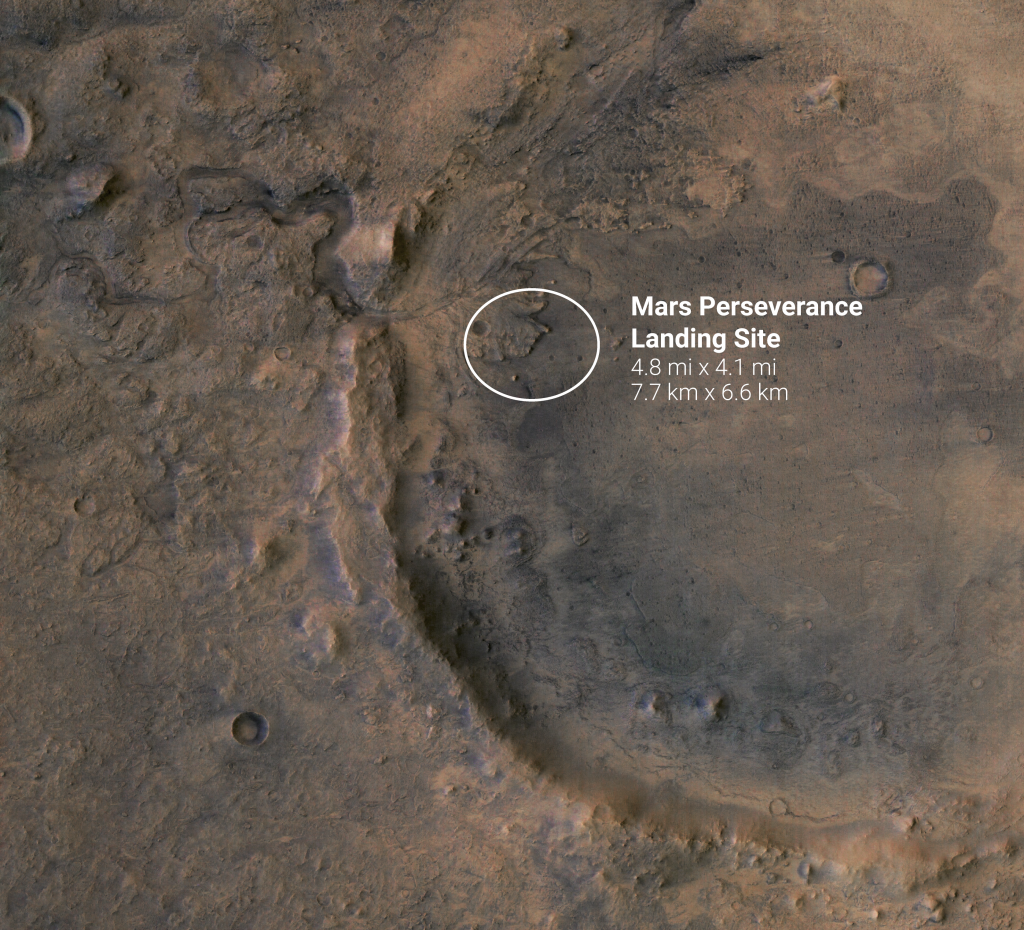
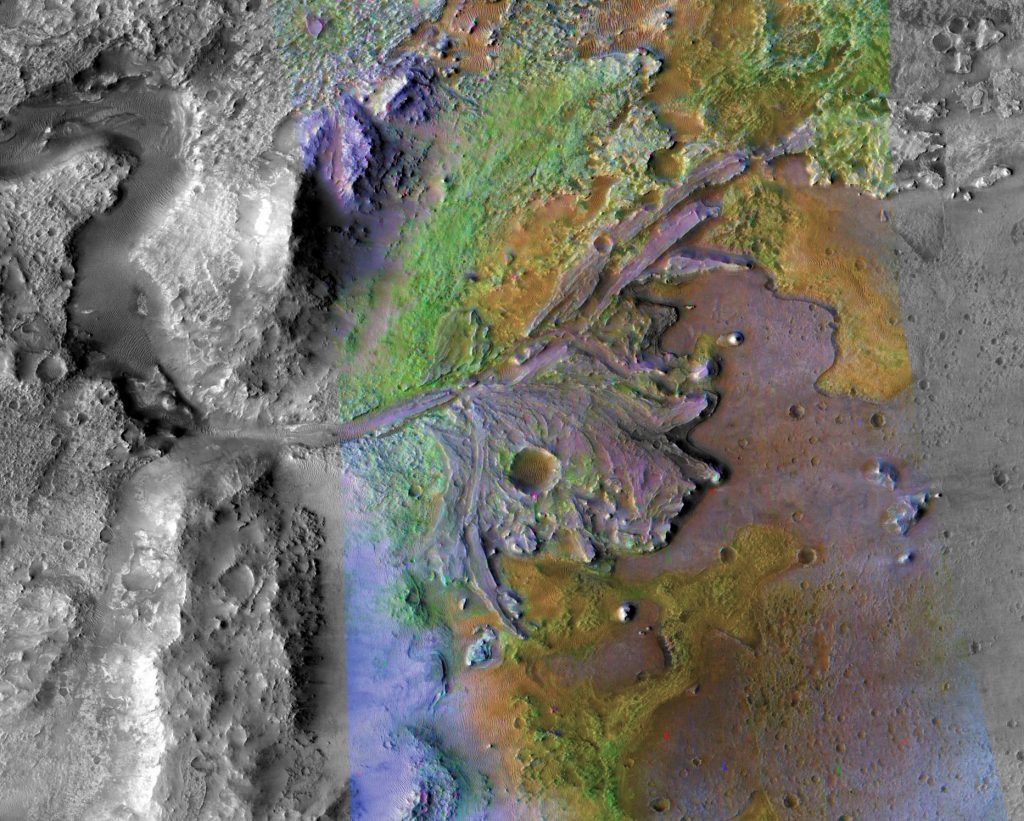
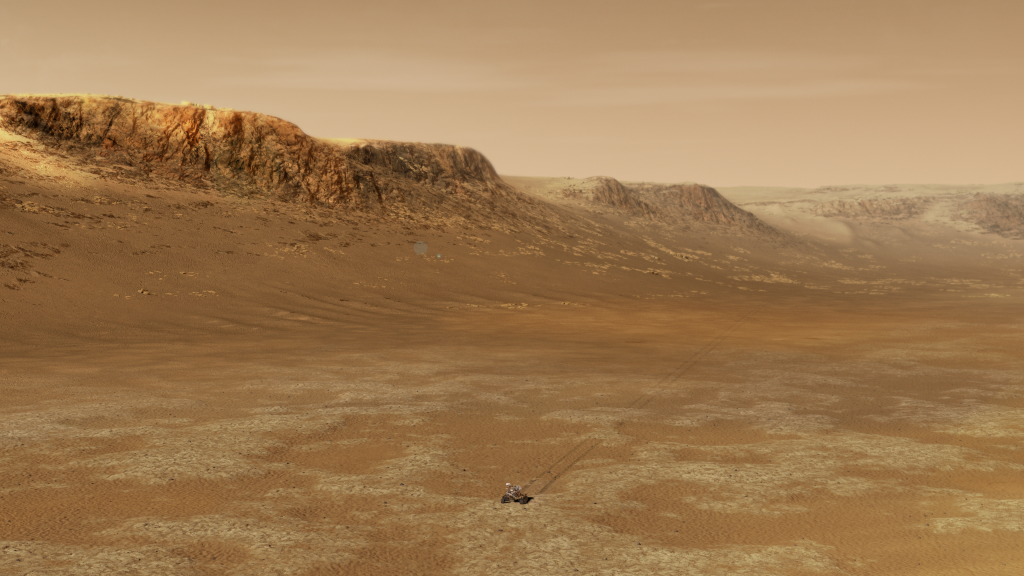
Images showing the Jezero Crater. NASA/JPL-Caltech
There are several stages involved in our work. We first select each sample site, after some careful work to narrow down localities using images and geometry measurements to check the logistics of access with various instruments on the Rover’s arm.
Once we’ve chosen the site, the next step is to abrade the rock to make a fresh surface and look at it with PIXL (Planetary Instrument for X-ray Lithochemistry)– that’s the instrument I partly oversee in my operations role.
PIXL is really a glorified hand lens: the area it can analyse is just the size of a postage stamp! It is an X-ray fluorescence spectrometer, and can make maps showing how chemical composition varies with textural components of the rock.
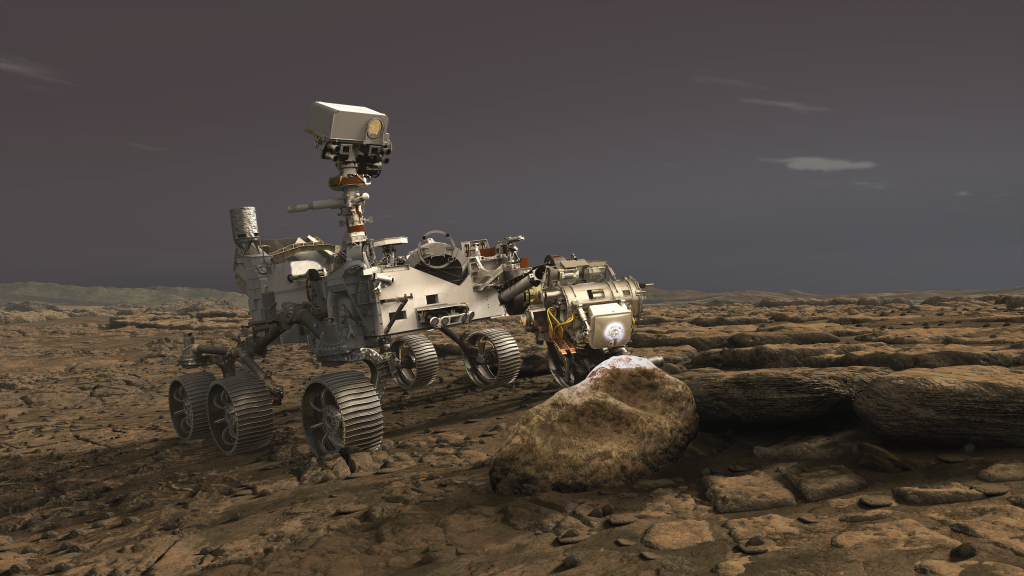
Our first core sample, as many of you know, was empty – the rock itself turned to powder during the coring process. This was a bit of a surprise, but it actually tells an interesting story. When we first looked at the images of the fresh surface of that rock it just looked heavily altered – nearly destroyed – unlike any igneous rock we’d seen, including lots of what looked to be rust and voids.
But, when we got our first PIXL measurements on it we discovered a whole load of salt minerals in the rock, in addition to the silicate minerals that most geologists are familiar with. Their presence is really exciting because that gives us direct information about the chemistry of the water which left them behind. This feeds directly into one of my main goals within the project, which is to figure out the lake’s water chemistry and how that chemistry might reflect regional processes or even global variations in climate.
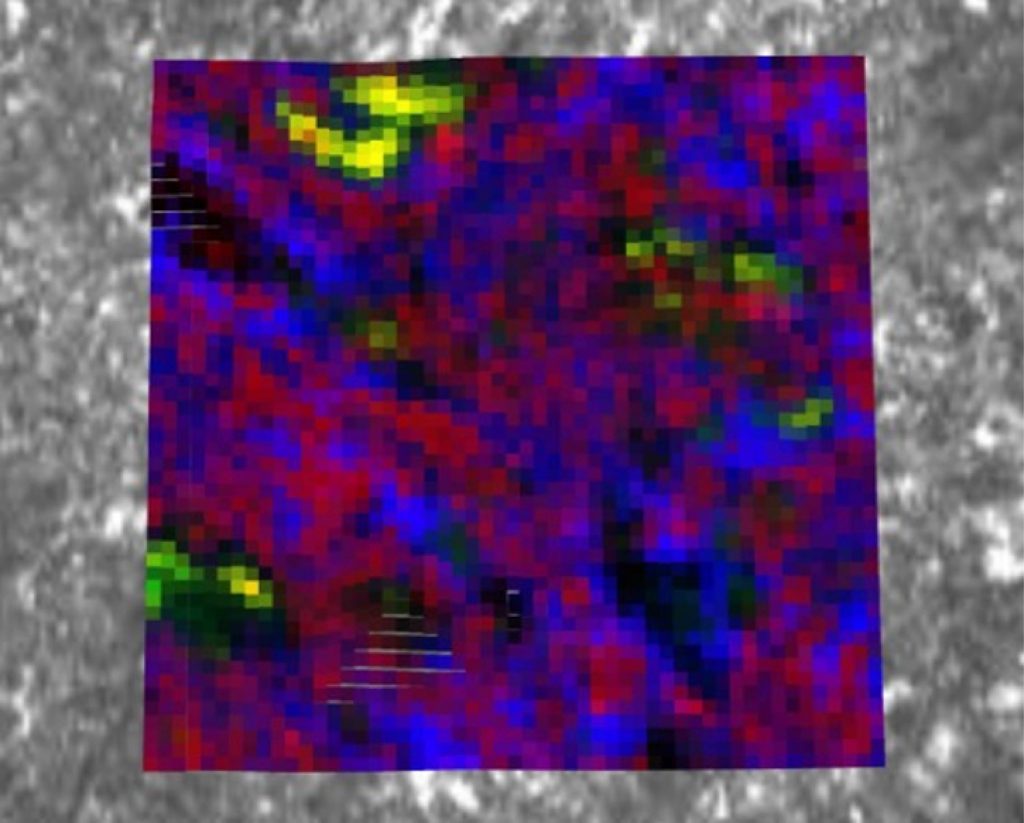
NASA’s Perseverance Mars rover used its PIXL instrument to analyze the “Bellegarde” abrasion target – revealing salt minerals (the yellow color in the image) which could contain bubbles of ancient water. NASA/JPL-Caltech. 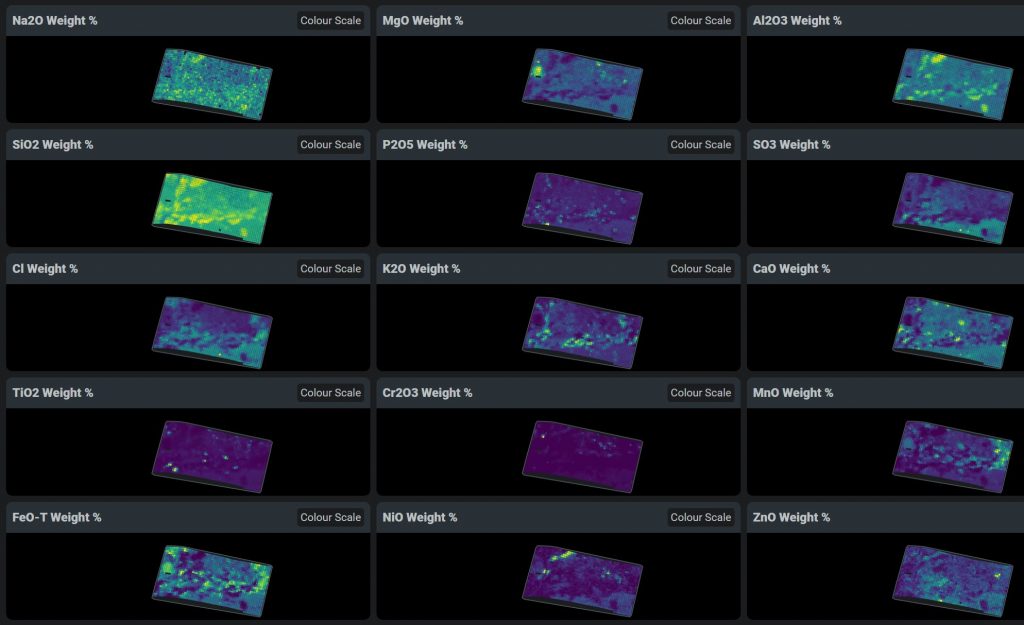
The first chemical maps produced by the PIXL. NASA/JPL-Caltech.
We’ve since collected a fresh core from the crater which looks really promising, but even from that crumbly rock we’ve already got some really exciting results. This technology is really complicated and its spectacular that we are in the position to be taking these cores and running the experiments – the unexpected results only add to the excitement.
How have you found working remotely on the mission?
It’s been amazing to work with so many scientists and engineers across the world. All these folks dial in and we often spend the first part of the call commiserating with one another about what time it is in each other’s part of the world!
We all have access to a series of purpose-built online tools, including those which help us manage meetings across different time zones. There’s a cool tool called ASTTRO, which takes the images collected by the Rover and allows you to select the areas which can be easily reached for sampling and analysis with the Rover’s arm – incorporating topography and the geometry of the arm. All of that gets fed into a central plan that is examined by scientists and engineers across the world in order to strategize sampling targets, involving a lot of discussion through a secure online chat. Although you can’t beat being in the same room, the software and tools are outstanding and are continually being developed to help us work remotely.
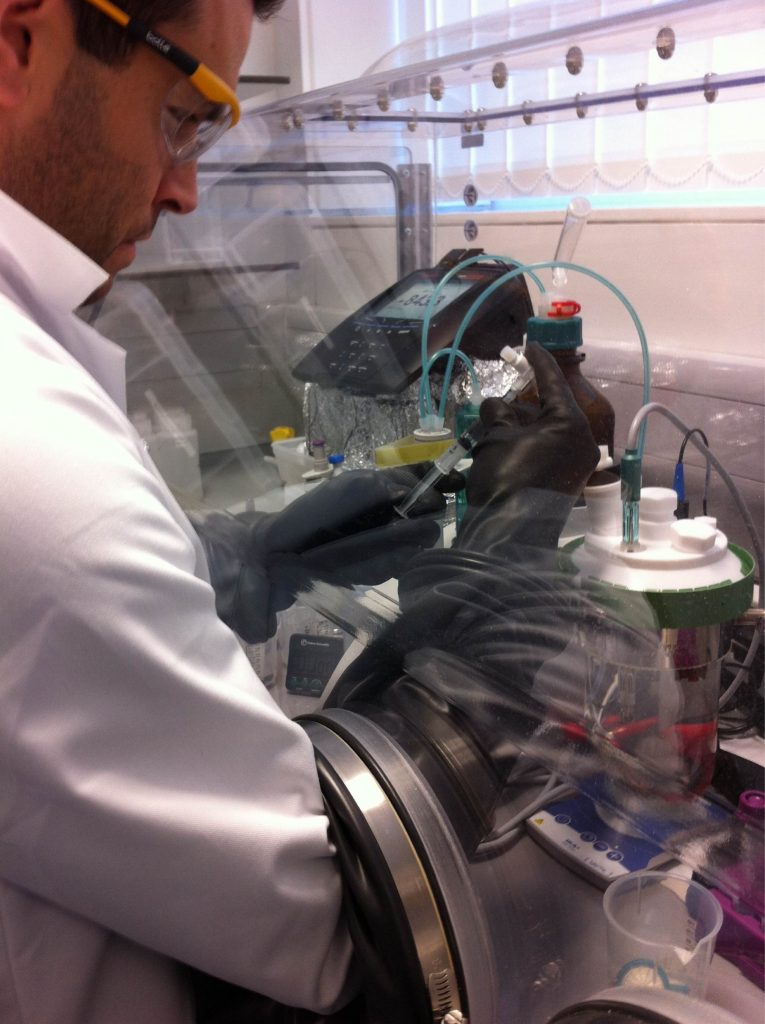
What’s surprised you most about the Mission?
The biggest surprise was how closely all of the team members (especially the smaller PIXL team) have really connected with each other and have become colleagues and friends, even without meeting in person.
When we meet up we have so-called ‘data parties’ – we just get together informally and discuss things in a really friendly environment. Everyone is in the same boat – none of us know what the data means, because its Mars and it’s all new territory – so we all go in with a very fresh approach and aren’t afraid to ask questions.
So what’s next for you and the team?
After examining out the new site with PIXL, we successfully drilled a fresh core. There’s lots of exciting work going on behind the scenes, so I can’t tell you too much but I can say that our analysis of these data is showing that these rocks record a history far more complex and exciting than we initially thought.
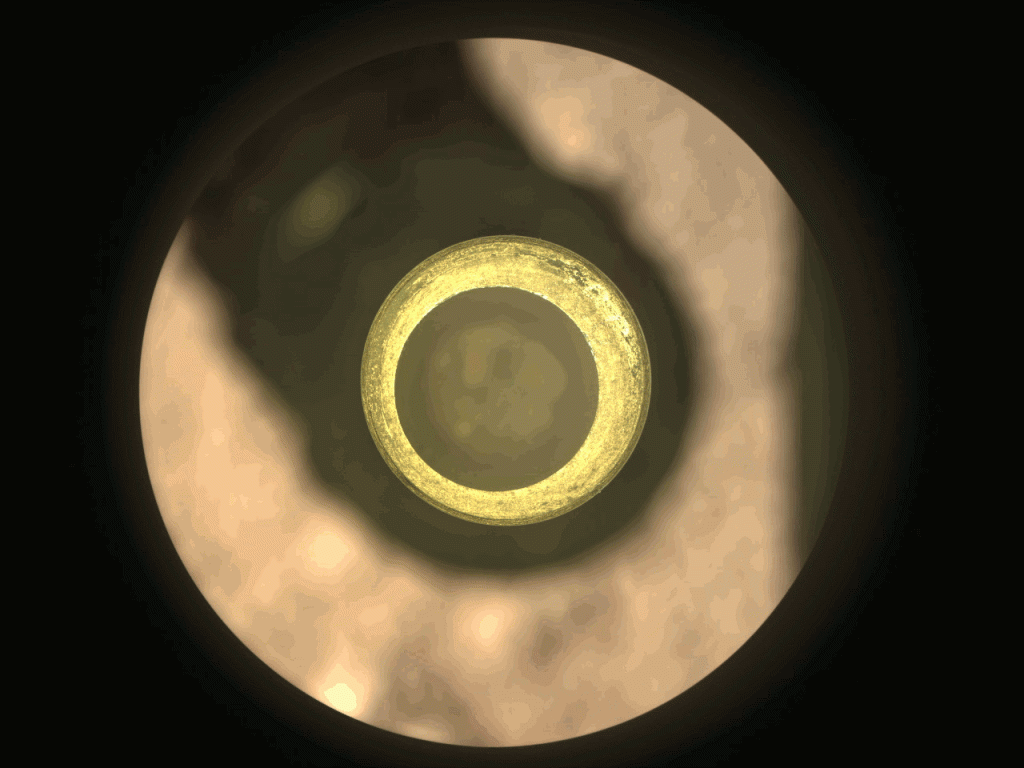
Perseverance has the capability to acquire up to 38 samples, which means we have to move on from each sample site relatively quickly. While it would be easy to spend weeks at one site collecting data, but the mission is really about facilitating Mars sample return, and this bigger picture goal demands scheduling the collections according to a tight schedule. It’s easy to get carried away in the details, so sometimes I do have to remind myself of that.
The aim is to collect samples up through the stratigraphy and get an idea of how the regional geology fits together, including the depositional system recorded by ancient lake sediments. Any geologist knows that one sample can tell a really interesting story, but I think we all know that we need a collection of related samples to place any one sample in proper geological context.


